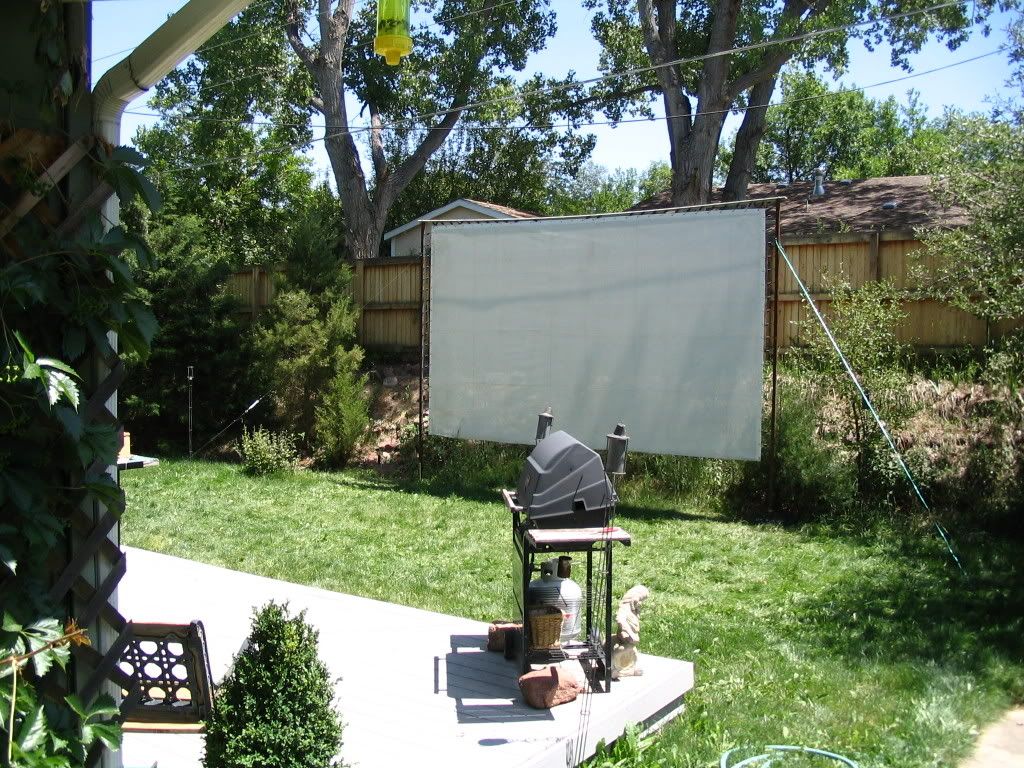Friday, December 12, 2008
Monday, April 14, 2008
Rough Theater

In these days where the film industry is dominated by blockbusters and giant multiplexes, much of the beauty of film is lost. Film isn't just about sitting silently in a crowded theater for 90 minutes with popcorn and Coke in hand, desperately trying to ignore a crying child in the audience. The art of film is often enjoyed best as a collaborative interaction between screen and audience. Films give the audience a chance to laugh with each other and, often, at ourselves.
Rough theaters for films can be in an assortment of places including backyards, warehouses, side of buildings, anywhere that is conventionally reserved for other activities. Often the locations for these rough theaters reflect the mood or theme of the film that is shown. For instance, a film describing rural life might be shown in a barn, or a documentary on health standards could be held in a meat packing plant. The idea is to use the setting as another character in the film. Our class will be showing our final projects in the Silva's backyard at the end of the semester. This is a wonderful time to interact with our fellow film students in an environment that is warm and friendly. Everyone knows what we have to go through as filmmakers so everyone supports one another as we display our one minute films.
Monday, March 24, 2008
Line Describing A Cone

Dr.Kreul's Avant-Guard Cinema class screened Anthony McCall's A Line Describing A Cone (1973) last Monday. The film portrays a dot that transforms into a complete circle over a 30 minute period. Normally this transformation would not be very exciting or interesting but the way that it was screened brought new life to the otherwise boring film. The room was filled with smoke and the film was projected onto the the smoke creating a 3 dimensional image. The result was an incredible experience.
As the circle formed, the developing cone in the smoke created a presence in the room that had form and a weight. The audience was encouraged to interact with the forming cone. The cone's side could be touched and I almost expected to feel the light. It was awesome to stand at the end of the projection and look toward the projector. It felt like you were being enveloped in this surreal blanket. As smoke would billow past the light, people would bat the smoke to create new patterns and enjoy the waves that crashed against the light. I'm not sure that I've ever seen that many people in a film audience laughing and playing with the film.
Search Engine Optimization
Monday, February 11, 2008
Week 3: Rayograms


 This week we started to work with processing film! After mixing the processor and fixer (which took about 15 minutes longer than anything should take to dissolve in hot water) we watched some projects of students past. I was fascinated to see what our finished products might look like passing at 24 fps. We've only been able to look at our film laying on paper or scanning over a light bulb. Amanda and I are hoping to employ most of the film manipulations to each of the elements rather than simply assigning one to another (i.e. bleach to air, paint to water). However, this has proved to be a more daunting task than we had anticipated.
This week we started to work with processing film! After mixing the processor and fixer (which took about 15 minutes longer than anything should take to dissolve in hot water) we watched some projects of students past. I was fascinated to see what our finished products might look like passing at 24 fps. We've only been able to look at our film laying on paper or scanning over a light bulb. Amanda and I are hoping to employ most of the film manipulations to each of the elements rather than simply assigning one to another (i.e. bleach to air, paint to water). However, this has proved to be a more daunting task than we had anticipated.After watching what our films may look like, we went back into the darkroom where the chemicals had been cooling off. This was our chance to make our first rayograms and we chomped at the bit to find the coolest patterns. The room was pitch black except for two small red bulbs which posed a difficult time for the entire group who attempted to crowd their 9 feet of film around the tiny bulbs. Amanda and I thought that we were being clever by sticking one end towards the light and jutting out to empty space. We soon discovered that the reason that everyone was crowding the lights was because visibility ended about four feet away which meant that my end of the film wasn't visible at all. Since the rayogram process requires that you meticulously place objects over the film in certain patterns and then expose the film to light, it is crucial to being able to see what you're doing. I ended up having to run my fingers up and down the sides of the film to make sure that the objects were lined up properly. After we exposed the film we saw that the objects weren't lined up but that it actually made a much better image. I am really excited to try to rayogram again.
